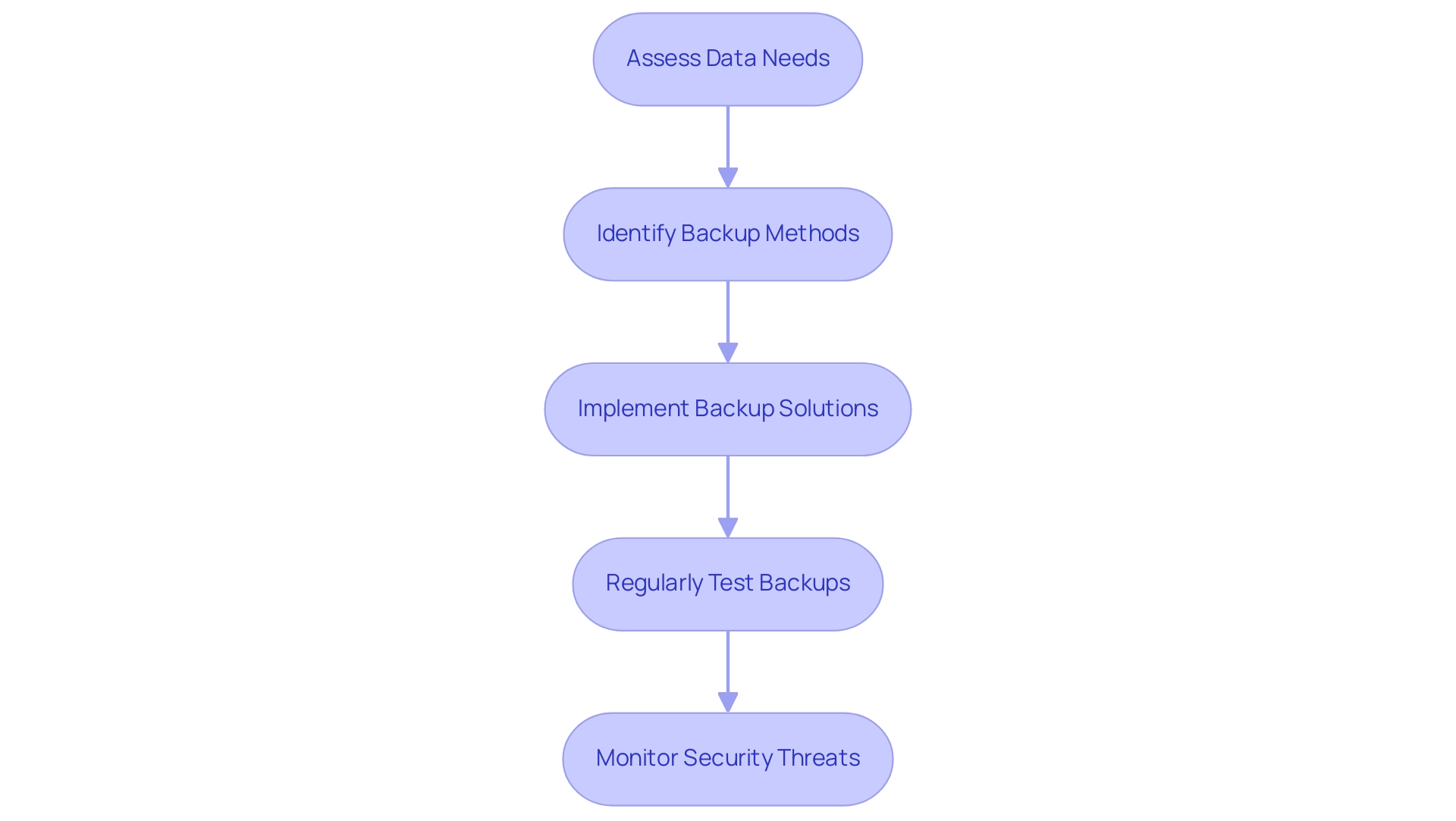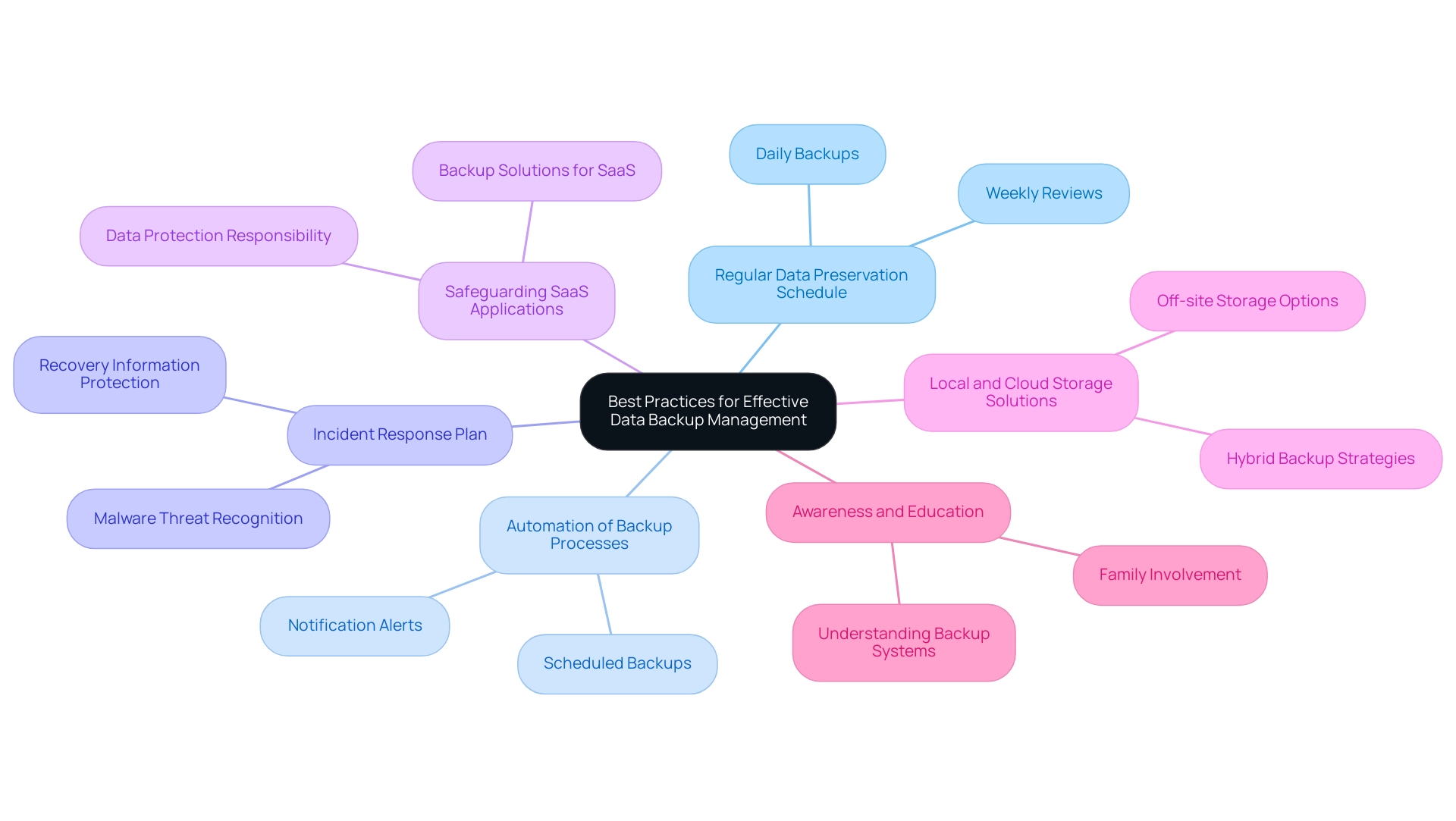Introduction
In a world where data has become as essential as the air we breathe, understanding the concept of Backup Life is crucial for every homeowner. This journey revolves around the systematic strategies designed to protect and preserve valuable information against the ever-present threats of data loss, corruption, and disaster. As technology advances and cyber threats loom larger, having a robust backup solution is no longer a luxury—it’s a necessity.
The alarming rise in ransomware attacks and the increasing costs associated with data breaches make it clear that proactive measures are vital for safeguarding digital assets. Just as homeowners invest in renewable energy to secure their future, prioritizing effective data management strategies can provide peace of mind and ensure that critical information remains intact, ready to be restored when needed.
Exploring the intricacies of Backup Life not only empowers individuals to navigate the complexities of today’s digital landscape but also highlights the importance of making informed decisions about data protection.
Understanding Backup Life: A Key Component of Data Management
Backup Life focuses on the continuous process of safeguarding and maintaining your information through organized preservation strategies. In our increasingly digital world, where information is as valuable as any physical asset, understanding the concept of backuplife becomes essential. It includes the various methods and technologies that ensure your precious information can be restored in case of loss, corruption, or disaster.
Just as savvy homeowners invest in solar energy systems to secure a sustainable power future, it’s equally important to prioritize robust backup solutions to safeguard your digital existence. Effective information management, with a focus on backuplife, not only keeps your critical details safe but also empowers you to navigate the complexities of the digital landscape confidently. Given the alarming trends—like the predicted ransomware attacks occurring every two seconds by 2031, which highlights the urgent need for proactive measures, and the staggering 53% increase in healthcare breach costs between 2020 and 2023—taking steps toward protection has never been more vital.
As Reed Smith pointed out, cyber scams surged by 400 percent in March 2020, marking a pivotal moment in our understanding of security threats. The MOVEit breach serves as a stark reminder of how vulnerabilities in widely used software can affect millions, as it exploited a flaw in a popular file transfer service, exposing sensitive information of at least 60 million individuals. This highlights the importance of organized support plans that can reduce such risks.
In this digital era, having a reliable backuplife not only protects your information but also offers you peace of mind.
The Evolution of Data Backup Strategies: Necessity and Challenges
The terrain of information preservation methods has experienced significant transformations over the decades, largely driven by technological progress and the rapid increase of information production. In earlier times, data preservation was a labor-intensive process, relying on physical media like tapes and disks. Unfortunately, these methods often led to reliability issues and accessibility challenges.
As our dependence on information increased—both for companies and in our personal lives—the need for more efficient backuplife options surged. Today, we benefit from cloud-based systems and automated solutions such as backuplife, which provide real-time information protection and simplify recovery processes. Yet, navigating this evolving terrain is not without its hurdles.
A significant concern is information security, as well as managing costs and adhering to compliance regulations. Dale Shulmistra observes a concerning trend:
A worrying 43% of IT decision-makers mistakenly assume that public cloud providers are accountable for their lost information.
This highlights the significance of comprehending management responsibilities.
Moreover, the enterprise storage software market share for 2024 emphasizes prominent vendors and their contributions to shaping recovery approaches, offering vital context for the current information management environment. The historical case study titled ‘The Information Age’ illustrates how the digital information explosion in the 2000s and 2010s led to the adoption of NAS devices and SSDs, enhancing access and storage efficiency. By understanding how recovery technologies have progressed, homeowners and businesses can make educated decisions about their information management strategies, which is essential for ensuring backuplife, much like choosing the perfect solar option for their energy requirements.
Types of Backup Solutions: Choosing the Right Fit
Navigating the world of data recovery options can feel overwhelming, but understanding the different types available is the first step to making a smart choice. Let’s break it down:
- Full Backups: This approach captures all your data in one go, giving you a complete snapshot. It’s straightforward but can take up a lot of space and time.
- Incremental Saves: These saves only capture the changes made since the last save, making them faster and more storage-efficient. Think of it as only adding new pages to your book rather than rewriting the entire thing.
- Differential Saves: Similar to incremental, but these save all changes since the last complete save, striking a balance between speed and storage.
- Cloud-Based Backups: Backuplife options enable you to store your information off-site, providing remote access and automatic updates. It’s like having a backuplife support partner who’s always available, ensuring your information is secure without you needing to do anything.
When selecting the appropriate recovery option, consider your information volume, how rapidly you need to restore it, and your budget. Just like assessing your energy needs when going solar—what works best for one homeowner might not be the best for another. It’s important to mention that only 10% of IT users secure their information daily, which emphasizes a prevalent problem with insufficient information preservation practices.
Neglecting to secure your information can lead to considerable financial consequences; for example, a breach involving fewer than 200 individuals can reduce expenses by as much as $1 million, highlighting the importance of having a robust recovery plan. Barry Elad, a technology writer, emphasizes, “Figuring out how the software works and creating content to shed more light on the value it offers users is my favorite pastime.” This insight acts as a reminder for homeowners to inform themselves about the available choices to leverage the full potential of support solutions.
Ultimately, the appropriate recovery strategy can protect you from unforeseen information loss and assist in keeping your home functioning efficiently.
Best Practices for Effective Data Backup Management
To efficiently handle information storage, homeowners should implement several crucial best practices. First and foremost, establishing a regular data preservation schedule is crucial for consistent data protection. Automating these processes not only saves time but also reduces the risk of forgetting to perform them manually.
In fact, the cloud storage market has seen remarkable growth—from $1.2 billion in 2017 to an impressive $4.5 billion today, with projections reaching $13.85 billion by 2028. This trend highlights the significance of trustworthy recovery options as ransomware threats and other information vulnerabilities continue to escalate.
With the growing danger of ransomware, it is crucial for homeowners to establish a robust incident response plan. Recognizing that malware can aim at recovery information sets can assist in reducing possible losses. Additionally, many families depend on endpoint devices like laptops and smartphones, which often contain important information that may not be backed up unless specifically arranged.
Homeowners should also take into account the necessity to safeguard information in SaaS applications such as Office 365 and Google G-Suite, as ensuring the security of this information is ultimately the organization’s duty.
Utilizing a combination of local and cloud-based storage solutions adds an extra layer of protection, shielding your information from both hardware failures and online threats. It’s also prudent to regularly assess your recovery procedures to ensure that you can retrieve your information swiftly and precisely when necessary. A case study on information loss risk awareness emphasizes that companies need to recognize the dangers of information loss, such as hardware lifespan and location-based threats, to guide their recovery strategies.
Proactive actions, such as investing in off-site and cloud storage, can significantly reduce the effects of potential information loss.
Furthermore, informing everyone in your home about the importance of information management encourages a culture of responsibility and awareness. Just like with solar energy systems, understanding and maintaining your backup solutions is vital for long-term success. By following these practices, you not only safeguard your valuable information but also enjoy peace of mind knowing that you’re prepared for whatever comes your way.
The Importance of Data Recovery: What Happens When Things Go Wrong
Information recovery is a vital aspect of your backuplife strategy, especially when tackling the unpredictable nature of loss. With human error accountable for 74% of breaches last year, having a solid recovery plan is essential. Whether it’s accidental deletion, a pesky hardware failure, or even a malicious attack, think of your recovery plan as your safety net!
This plan should clearly outline the steps to recover your valuable information from stored copies and set realistic timeframes for restoration. As a homeowner, it’s crucial to understand your backup solutions’ restoration processes and prioritize the recovery of essential information. The financial consequences are considerable as well; the average expense of a breach amounted to $4.45 million in 2023, indicating the necessity for strong approaches.
By being prepared for the unexpected, you can minimize downtime and reduce stress—similar to having a game plan for those rare solar energy outages. Acknowledging the significance of information recovery not only highlights its role in your backuplife but also emphasizes the necessity for a thorough strategy that can keep your digital life operating seamlessly. As highlighted by CrowdStrike, state-sponsored actors are increasingly targeting cloud service providers, making it even more critical to have a well-defined data recovery plan.
Conclusion
Understanding the importance of Backup Life is essential for every homeowner navigating today’s digital landscape. By implementing systematic backup strategies, individuals can safeguard their invaluable data against potential loss, corruption, and disaster. As technology evolves and cyber threats become more sophisticated, prioritizing a robust backup solution is no longer just a recommendation; it’s a necessity. The alarming statistics surrounding ransomware attacks and the rising costs of data breaches serve as a wake-up call, emphasizing the need for proactive data management.
The journey through various backup solutions—from full, incremental, and differential backups to cloud-based options—highlights the importance of choosing the right fit for individual needs. Each type of backup offers unique benefits, and understanding these can empower homeowners to make informed decisions that protect their digital assets. Regularly scheduled backups, incident response strategies, and a combination of local and cloud-based solutions further enhance data security, ensuring that vital information remains accessible even in times of crisis.
Ultimately, embracing the principles of Backup Life not only provides peace of mind but also fosters a culture of responsibility around data management. By being prepared for the unexpected and having a solid recovery plan in place, homeowners can navigate the complexities of data loss with confidence. As the digital world continues to expand, investing in effective backup strategies is a crucial step towards securing one’s digital future, much like investing in renewable energy for a sustainable home.




